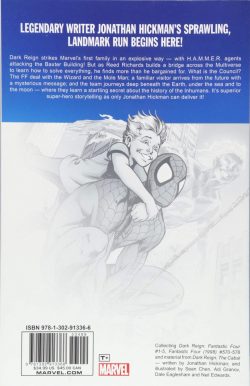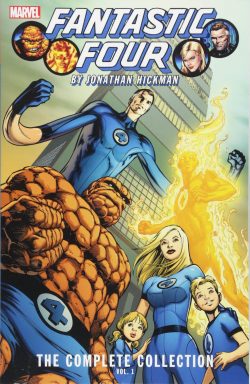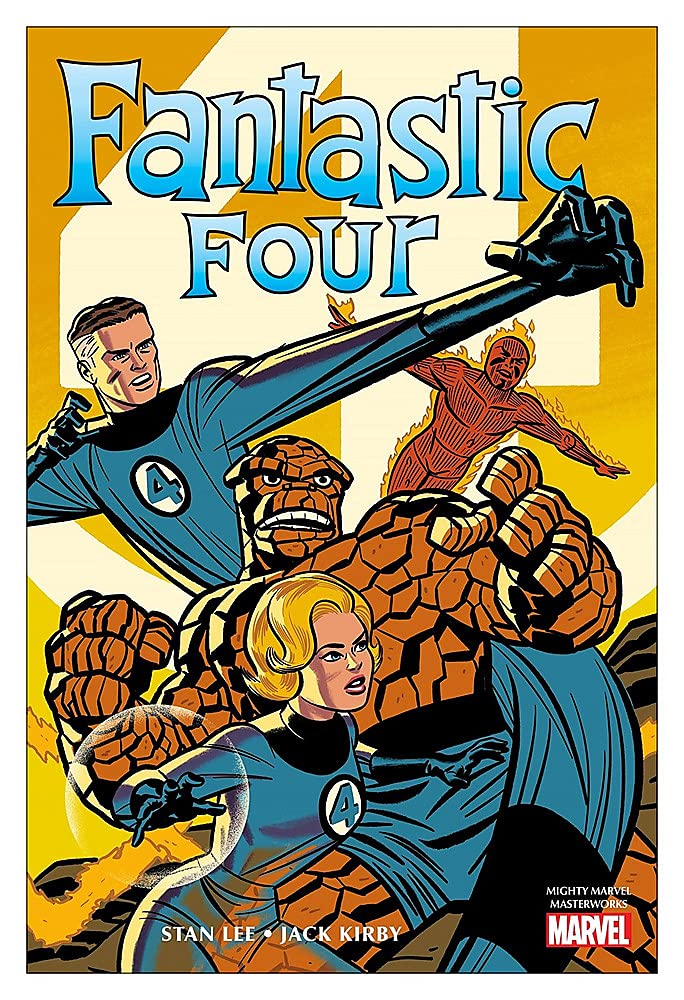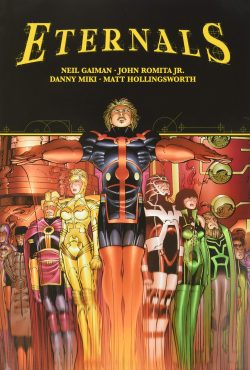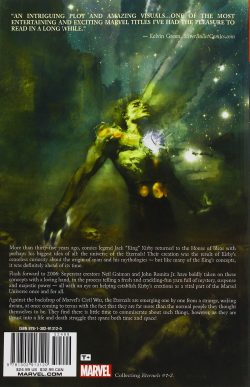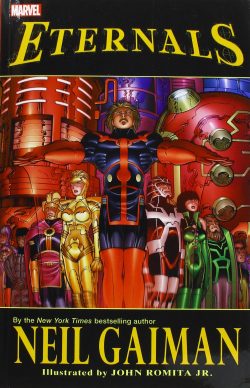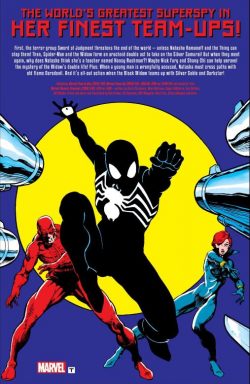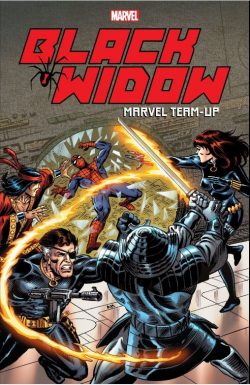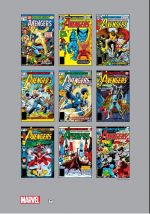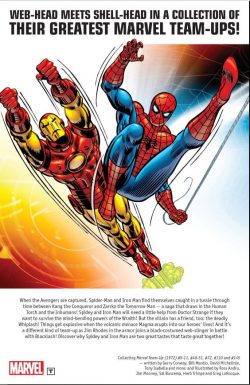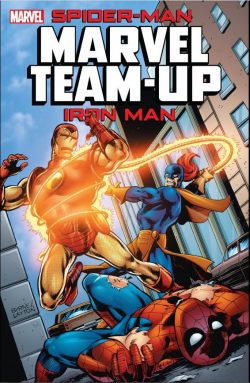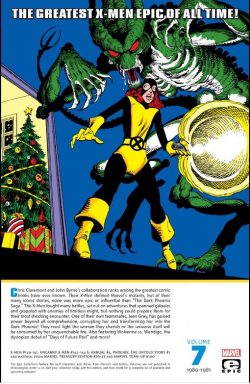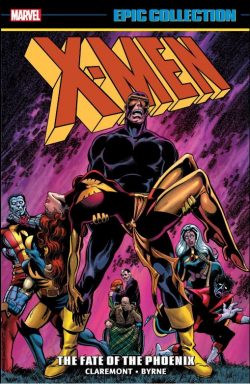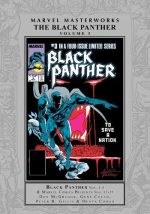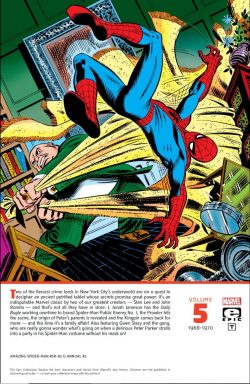
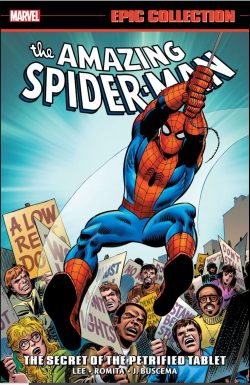
By Stan Lee, John Romita, John Buscema, Larry Lieber, Marie Severin & various (Marvel)
ISBN: 978-1-3029-2196-5 (TPB)
Win’s Christmas Gift Recommendation: Scintillant Superhero Sagas… 9/10
The Amazing Spider-Man was always a comic book that matured with – or perhaps just slightly ahead of – its fan-base. In this superbly scintillating compilation of chronologically corrected webspinning wonderment (available in ponderous paperback or ephemeral eBook formats), the World’s Most Misunderstood Hero barely survives another rocky period of transformation as the second great era of Amazing Arachnid artists moved inevitably to a close. Although the elder John Romita would remain closely connected to the Wallcrawler’s adventures for some time yet, these tales would number amongst his last sustained run as lead illustrator.
After a shaky start, The Amazing Spider-Man quickly became a sensation with kids of all ages. Before long the quirky, charming, thrillingly action-packed comics soap-opera would become the model for an entire generation of younger heroes impatiently elbowing aside the staid, (relatively) old thirty-something mystery-men of previous publications and hallowed tradition.
You know the story: Peter Parker was a smart-but-alienated kid bitten by a radioactive spider during a school science trip. On discovering he’d developed astonishing abilities – which he augmented with his own natural chemistry, physics and engineering genius – the boy did what any lonely, geeky nerd would do with such newfound prowess: he tried to cash in for girls, fame and money.
Making a costume to hide his identity – in case he made a fool of himself – Parker became a minor media celebrity; and a criminally self-important one. To his eternal regret, when a thief fled past him one night he didn’t lift a finger to stop him, only to find when he returned home that his guardian uncle Ben Parker had been murdered.
Crazed and vengeful, Peter hunted the assailant who’d made his beloved Aunt May a widow and killed the only father he had ever known, discovering, to his horror, that it was the self-same felon he had neglected to stop. His irresponsibility had resulted in the death of the man who raised him, and the traumatised boy swore to forevermore use his powers to help others. Since that night, the Wondrous Wallcrawler tirelessly battled miscreants, monsters and madmen, with a fickle, ungrateful public usually baying for his blood even as he perpetually saves them…
The rise and rise of the Amazing Arachnid increased pace as the Swinging Sixties drew to a close. By the time of the tales collected in this fulsome, Epic Collection – featuring Amazing Spider-Man Annual #5 and #68-85 of the monthly title (spanning October 1968 to June 1970) and the usual basket of editorial extras – Peter and his ever-expanding cast of comrades were on the way to being household names and the darlings of college campuses and media intelligentsia.
Stan Lee’s scripts were completely in tune with the times – as understood by most kids’ parents at least – and the increasing use of soap opera tactics kept older readers glued to the series even if the bombastic battle sequences didn’t.
Thematically, there’s still a large percentage of old-fashioned crime and gangsterism and, arguably, an overuse of mystery plots. Costumed super-foes as antagonists were finely balanced with the usual suspect-pool of thugs, hoods and mob-bosses, but these were not the individual gangs of the Ditko days. Now Organised Crime and Mafia analogue The Maggiawere the big criminal-cultural touchstone as comics caught up with modern movies and headlines.
This volume opens with Amazing Spider-Man Annual #5, by Lee and his brother Larry Lieber. Inked by Mike Esposito – still in his clandestine “Mickey DeMeo†guise – it clears up a huge mystery in the webspinner’s life by revealing the secret behind the deaths of ‘The Parents of Peter Parker!’.
Played as an exotic spy-thriller, the tale takes Spider-Man to the Algerian Casbah to confront the Red Skull. Nit-pickers and continuity-mavens will no doubt be relieved to hear the villain was in fact retconned later and designated as the second (Soviet) master-villain – who featured in the 1953-1954 Captain America revival, not the Nazi original that Lee and Co had clearly forgotten was in “suspended animation†throughout that decade when writing this otherwise perfect action romp and heartstring-tugging melodrama…
That annual also provided a nifty Daily Bugle cast pin-up, a speculative sports feature displaying the advantages of Spider powers, a NYC street-map of the various locations where the Spidey saga unfolded, plus a spoof section displaying how the Wallcrawler would look if published by Disney/Gold Key, DC or Archie Comics, or drawn by Al “Li’l Abner†Capp, Chester “Dick Tracy†Gould and Charles “Peanuts†Schulz.
It all wraps up with ‘Here We Go A-Plotting!’: a comedic glimpse at work in the Marvel Bullpen, uncredited but unmistakably drawn by marvellous Marie Severin…
Issue #68 (by Lee, Romita & Jim Mooney) launched a lengthy saga devoted to the pursuit of an ancient stone tablet by various nefarious forces, beginning as The Kingpin exploits a topical moment of student dissent to trigger a ‘Crisis on the Campus!’ When a seemingly inevitable riot erupts, the Big Bad tries to swipe the artefact, leaving a few teenagers we’re all familiar with looking very guilty…
Meanwhile Peter Parker, already struggling with debt, a perpetually at-Death’s-Door Aunt May, relationship grief with girlfriend Gwen Stacy and no time to study, is accused of not being involved enough by his fellow students…
During this period scripter Lee increasingly tapped into contemporary student unrest in various Marvel titles, and ‘Mission: Crush the Kingpin!’ further tightens the screws as dissent explodes into violence whilst the corpulent crime czar incriminates Spider-Man in the tablet’s theft.
Hounded and harried in ‘Spider-Man Wanted!’, the web warrior nevertheless defeats the Kingpin, only to (briefly) believe himself a killer after he attacks personal gadfly J. Jonah Jameson in a fit of rage; causing an apparent heart attack in the obsessive, hero-hating publisher.
At his lowest ebb, and stuck with the tablet, Parker is attacked by sometime-Avenger Quicksilver in ‘The Speedster and the Spider!’ (#71), before John Buscema signs on as layout-man in ‘Rocked by… the Shocker!’
No sooner does Spider-Man leave the stone tablet with Gwen’s dad – former Police Chief George Stacy – than the vibrating villain (don’t bother – all the jokes have been done) attacks, pinching the petrified artefact and precipitating a frantic underworld civil war. The Maggia dispatch brutal over-sized  enforcer Man-Mountain Marko to retrieve it at all costs in ‘The Web Closes!’ (Lee, Buscema, Romita & Mooney) as upstart mob lawyer Caesar Cicero makes his long-anticipated move to depose aged Don of Dons Silvermane…
The frail, elderly crime-lord knows the true secret – if not methodology – of the tablet, and abducts biologist Curt Connorsand his family to reconstruct the formula hidden on the stone and ensure his ultimate victory.
Sadly, nobody but Spider-Man knows Connors is also the lethal Lizard and that the slightest stress might unleash the reptilian monster within to once more threaten all humanity. ‘If this be Bedlam!’ (Romita & Mooney) leads directly into ‘Death Without Warning!’ as the decrypted secret of the tablet sparks a cataclysmic battle that seemingly destroys one warring faction forever, decimating the mobs, but also freeing a far more immediate and ferocious threat…
Issue #76 sees John Buscema become full penciller with suspenseful action yarn ‘The Lizard Lives!’ before concluding chapter ‘In the Blaze of Battle!’ witnesses the webspinner trying to defeat, cure and keep the tragic secret of his friend Connors, all whilst preventing guest-starring Human Torch Johnny Storm exterminating the rampaging rogue reptile forever…
Amazing Spider-Man #78 details ‘The Night of the Prowler!’ and features John Romita Junior’s first ever creator-credit for “suggesting†dissatisfied young black man Hobie Brown. Hobie briefly turns his frustrations and innate inventive genius to costumed criminal purposes until set straight by Spider-Man in concluding chapter ‘To Prowl No More!’
With #80, a string of single-issue adventures was instituted: short, stand-alone fight-episodes delivering maximum thrills and instant satisfaction. ‘On the Trail of the Chameleon!’ sees the criminal charlatan indulging in a robbery spree until the wallcrawler steps in, after which an action-packed if ridiculous punch-up results from ‘The Coming of The Kangaroo!’ It also includes a clear contender for daftest origin of all time…
Romita senior returned to pencil ‘And Then Came Electro!’ with the voltaic villain attempting to slaughter Spidey live on national TV.
Major revelations about the Kingpin came in a 3-part saga spanning #83-85: opening with the introduction of ‘The Schemer’ (Lee, Romita Sr. & Esposito): a mysterious, extremely well-heeled criminal outsider determined to destroy the power of the sumo-like crime-lord and usurp his position in the underworld.
‘The Kingpin Strikes Back!’ (Romita sr., Buscema & Mooney) and ‘The Secret of the Schemer!’ radically reshaped the Marvel Universe, not just by disclosing the family history of one of the company’s greatest villains, but also by sending Parker’s eternal gadfly Flash Thompson back to a dubious fate in Vietnam. It wasn’t the kid’s first tour, but now the war was becoming unpopular at home and the bombastic jingoism of earlier issues was replaced by more contemplative concerns as evoked by authorial mouthpiece Stan Lee…
Also on glorious show are the Romita Snr cover from all-reprint Amazing Spider-Man Annual #6; a reproduction of an earlier collection cover by Romita Snr & Richard Isanove, and a treasure trove (31 pages!) of original art, sketches, designs, rejected pages and covers plus pencils and roughs by Lieber, Romita Snr. Buscema, Mooney, Severin & Esposito.
Spider-Man became a permanent unmissable part of many teenagers’ lives at this time and did so by living a life as close to theirs as social mores and the Comics Code would allow. Blending cultural authenticity with glorious narrative art, and making a dramatic virtue of the awkwardness, confusion and sense of powerlessness most of the readership experienced daily, resulted in an irresistibly intoxicating read, delivered in addictive soap-opera slices, but none of that would be relevant if the stories weren’t so compellingly entertaining.
This book is Marvel and Spider-Man at their peak. Care to see why?
© 2020 MARVEL

